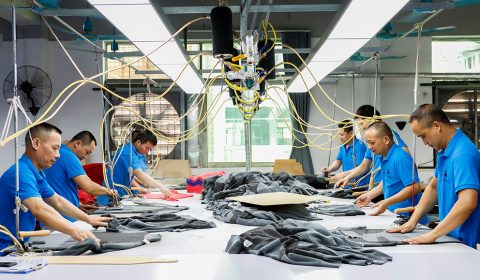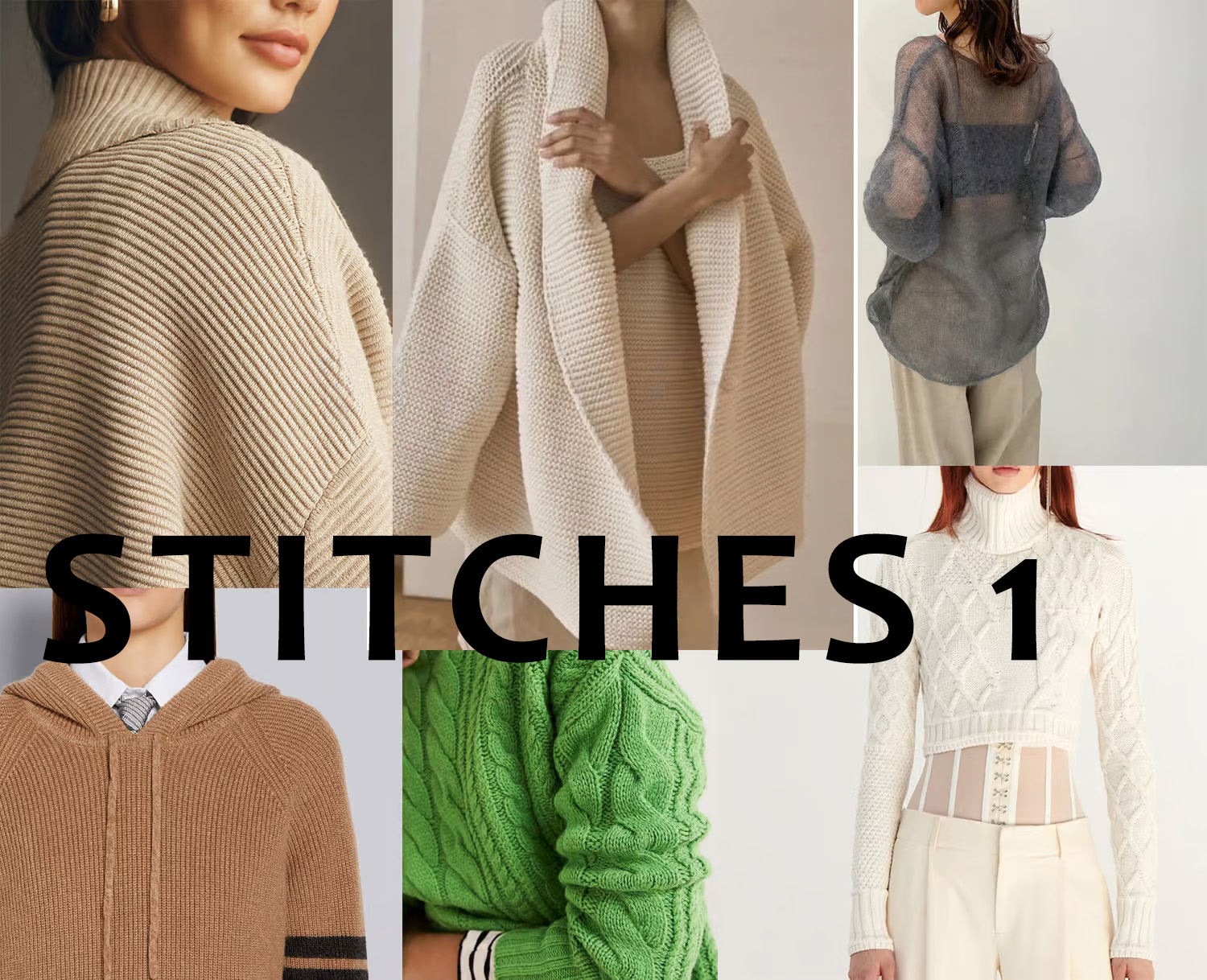As an indispensable part of the fashion field, men’s knitwear has always occupied an important position in the market. Its unique design and comfortable wear make it popular with consumers. In today’s fashion society, male consumers are increasingly focused on personalization and brand identity, which makes designers and brands face higher expectations in the innovation and design of men’s knitwear. From comfortable home wear to trendy street styles, the diversified positioning of men’s knitwear in the market allows it to find its own market in various fields.
In this competitive market environment, design has become the core factor that determines brand competitiveness. This article will delve into some of the best-selling designs that stand out in the menswear knitwear space and attract customers. These designs are not only unique in appearance, but also focus on comfort, versatility, personalization, innovative patterns and prints, and environmental sustainability. Through in-depth analysis of these design elements, we can better understand consumer needs and market trends, and provide practical references and inspirations for designers and brands.
Fashion Trends and Design concepts
In the fashion industry, men’s knitwear has always been one of the most eye-catching categories. An in-depth understanding of the impact of current fashion trends on men’s knitwear is the key to design success. At the same time, exploring design concepts that appeal to customers, including colors, patterns and cuts, will help create styles that sell well and are popular.
Fashion is an ever-evolving trend that directly influences consumers’ choice of clothing. For men’s knitwear, we need to understand and follow the current fashion trends in order to keep the product attractive. Some of the key trends in today’s fashion scene include:
- Sustainable fashion: With the increase of environmental awareness, sustainable fashion has become a key direction for the fashion industry. Incorporating environmentally friendly elements into the design, such as organic cotton and recycled fibers, will be more likely to resonate with customers.
- Retro Revival: Retro style has always been the eternal theme of fashion. Incorporating classic design elements into knitwear, such as vintage patterns and color matching designs, can cater to consumers who like a nostalgic feeling.
- Functional sports style: Sports and leisure style has always been popular. Incorporating functional designs into knitwear, such as multiple pockets, zipper trim, etc., can make products more attractive while meeting modern consumers’ needs for comfort and practicality.
Comfort and sense of wear
Comfort is a crucial factor in the design of men’s knitwear, which is directly related to consumers’ wearing experience and satisfaction. In the fashion industry, consumers are paying more and more attention to the comfort of clothing, which has become a trend that cannot be ignored. Designers have come to realize that a comfortable menswear knitwear can not only increase customer loyalty, but also contribute to the brand’s word of mouth and market position.
Comfort can include the softness of the fabric, breathability, and fit of the garment. Choosing high-quality natural fibers, such as wool or cotton, will ensure the softness of the fabric and make the clothing more skin-friendly when it comes into contact with the skin. At the same time, the consideration of air permeability is also crucial to improve the comfort of wearing, especially in the warm season.
In addition to the choice of fabric, the cut of clothing is also a key part. Ergonomic tailoring takes into account the structure and movement of the body to ensure that clothing not only fits well, but is not restricted when moving. Whether it is the design of the neckline, the elasticity of the cuff or the length of the pant leg, it needs to be carefully thought out to provide the best wearing experience for the customer.
In the pursuit of comfort, the selection of high-quality materials is an indispensable part of the design. High quality natural fibers, such as carefully treated wool or long staple cotton, not only have good warmth, but also care for the skin. These materials give the customer a soft, warm feeling when worn, while also helping to maintain the shape and texture of the garment.
Ergonomic tailoring is a key factor in the design, which takes into account the curves and movements of the human body, making the garment more in line with the body’s natural contours. From the design of the shoulder to the elasticity of the waistband, every detail needs to be carefully calculated and tested to ensure that the wearer can move freely in the movement and feel the fit of the body.
Overall, the design pursuit of comfort and sense of wear is not only a choice of materials and tailoring, but also a deep understanding of customer needs. In the competitive fashion market, those brands that can balance comfort and fashion design will be more likely to win the favor of consumers.
Sustainability and Environmental design
With the increasing attention of society to environmental issues, sustainable development has become a trend that cannot be ignored in the fashion industry. Sustainability is not just an act, it is a value, and fashion brands should incorporate a sense of environmental responsibility into their designs. First, the impact of sustainability on the fashion industry is to steer brands in a more environmentally friendly and socially responsible direction. Consumers are increasingly conscious of a brand’s social image, choosing to buy brands that take environmental considerations into account in their production and design. This shift also has a positive impact on the brand’s image and market position, as the brand’s sustainability initiatives demonstrate its recognition of social values.
Secondly, the impact of sustainability is manifested in major changes to the supply chain of the fashion industry. More and more brands are looking at the source of raw materials, the sustainability of the production process and the disposal of waste. By using more environmentally friendly materials such as organic cotton, recycled fibers and biodegradable materials, brands can reduce their dependence on natural resources and reduce the environmental impact of their production processes. Among the changes in the supply chain, brands are also gradually achieving more efficient energy use and reducing waste emissions, thereby reducing the burden on the environment.
Designing fashion products based on environmentally friendly materials and production methods is not only a contribution to the environment, but also a responsibility of the brand to the consumer. First of all, brands can attract more environmentally concerned customers by actively promoting the environmentally friendly design concepts they adopt. This includes a clear commitment to sustainability in promotional materials, labels and advertising. Through transparency and authenticity, brands can build trust with customers and promote brand loyalty.
Secondly, design based on environmentally friendly materials and production methods helps to create a unique brand story. By highlighting the brand’s unique contribution to environmental protection, brands can create their own unique image in the market. This uniqueness not only helps the brand stand out from the fierce competition, but also resonates with consumers, making them feel that buying the brand’s products is a support for the environmental cause.
In general, fashion brands’ efforts in sustainability and environmental design are not only driving the direction of the industry, but also winning brands more environmentally concerned customers. Through environmentally friendly design, the brand can achieve both commercial value and social value, and become a model leading the sustainable development of the industry.




 English
English Deutsch
Deutsch Français
Français Italiano
Italiano Español
Español Русский
Русский Polski
Polski Nederlands
Nederlands Svenska
Svenska

